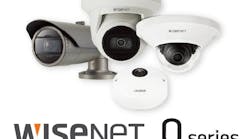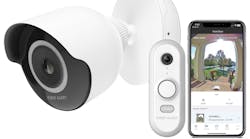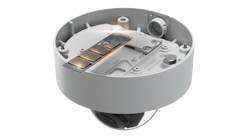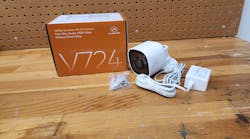First established as a bingo-hall style building by the Fort McDowell Yavapai Nation in the early 1990s, We-Ko-Pa Casino received approval to be revamped into a fully-fledged gaming facility in 2017. To ensure the safety of staff and visitors, this also included a new video surveillance system.
When it came time to build the new facility, the Tribal Regulatory Agency, having learned from its earlier attempts, knew it had to find a vendor that wouldn’t let it down. “We were looking for a manufacturer that had a variety of camera offerings to give us what we wanted and that also had a good reputation for quality, ” explains Lee Brown, lead surveillance technician for the Fort McDowell Tribal Regulatory Agency. The agency found what it was looking for with Hanwha Techwin.
The number of cameras available from Hanwha Techwin was a key differentiator for the We-Ko-Pa Resort, because it enabled technicians to choose the right camera for every situation. The range of options was particularly important when it came time to design camera coverage for the slot floor in the new facility. This area proved to be challenging in part because it was designed to be flexible and modular. The new design allows the casino to be dynamic in terms of where machines are placed. The challenge was how to ensure coverage of every machine even as they move around daily.
Technicians initially considered attaching cameras to the “cloud” ceiling so they could be moved as the configuration changed. But, because it floats below a concrete ceiling, this wasn’t possible. The casino decided instead to use the higher resolution P series 4K cameras and place them strategically throughout the space.
“We had to give very careful consideration to where we placed our cameras,” Brown says. “We wanted high quality and flexibility to avoid having to reconfigure and reinstall cameras all the time. The image quality with the Hanwha Techwin cameras gave us the edge we needed to work within our ceiling constraints.”
Today, the new casino has more than 800 Hanwha Techwin cameras, including the XNV-8080R, PNV-9080R and PNF-9010R models. Brown likes the quality they deliver at low bitrates.
“The majority of our cameras face intense and volatile lighting changes against a backdrop of complex scenery with many moving objects,” he says. “Hanwha Techwin cameras and their advanced WDR [Wide Dynamic Range] technology can easily be configured to accommodate these conditions without sacrificing quality or producing obnoxious data streams.”
While part of the interest in Hanwha Techwin was based on the build and image quality of the cameras and variety of the offerings, the casino also was drawn to the Wisenet WAVE VMS (Video Management System).
“We were attracted to the WAVE VMS, because our virtualized server and client operating systems are 100% Linux-based, and the WAVE client and server applications are well supported on Linux,” explains Brown. “It works exceptionally well with the Hanwha Techwin cameras and other devices, like HDMI encoders and third-party cameras.”
WAVE also helps operators with live monitoring. As part of their daily routine, casino operators watch a variety of events and occurrences, including deliveries and vendors on site.
“The layout system in WAVE makes it easy for us to organize our cameras into groups,” Brown says. “So, when an operator follows someone through the casino, rather than thinking in terms of which camera covers which machine or specific area, they think more in terms of the geography of the location.”
Every casino must comply with strict video surveillance retention requirements in part because forensic examination and maintaining a clear chain of custody are extremely important. The We-Ko-Pa Resort has a one-week minimum retention rate, with some cameras keeping video for 30 days. We-Ko-Pa has 500 terabytes of redundant ZFS-based network storage. To reduce the storage requirements for video surveillance footage, motion-based high/low recording is used. If no motion is detected in a frame, the camera records at very low quality and low frame rate. If the camera detects motion, then the recording automatically shifts to high-quality mode.






